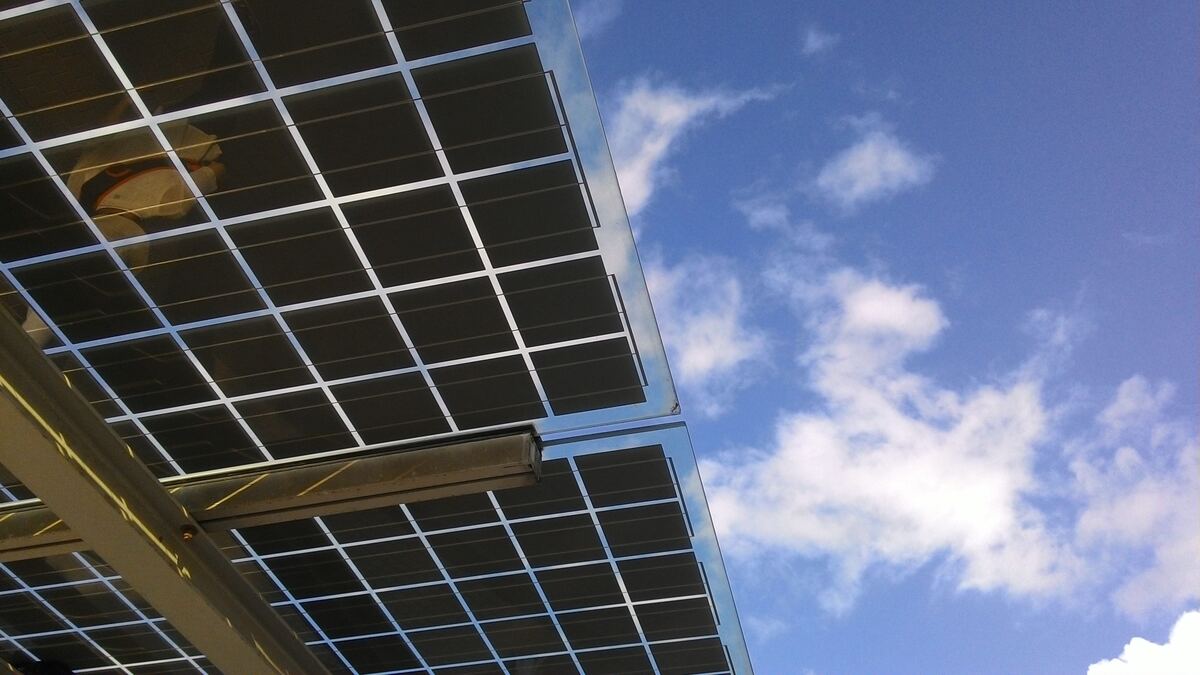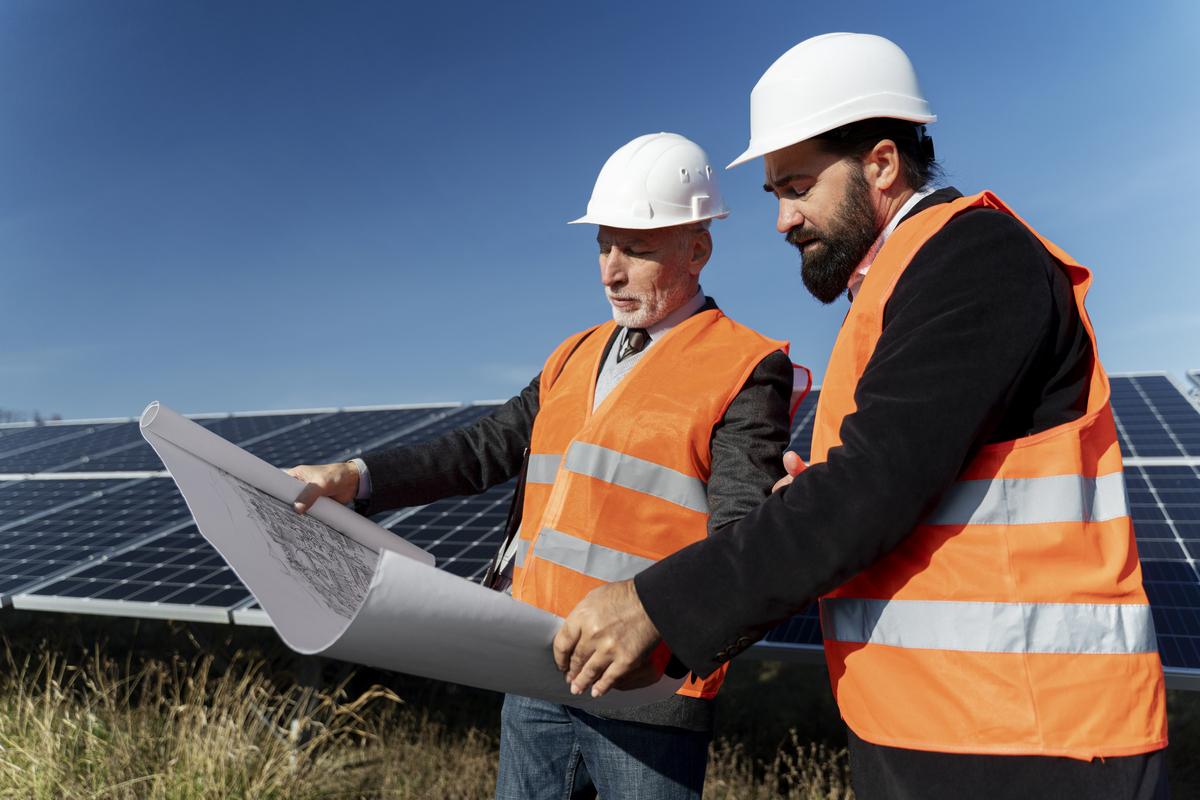Exclusive Neuroject Article: Energy efficiency in buildings has become extremely important in a time of growing urbanization and rising energy demands. Building operations, including heating, cooling, lighting, and appliance use, represent a sizeable amount of the world’s energy use. This massive energy use puts a strain on resources and greatly worsens the environment, including rising greenhouse gas emissions and the effects of climate change. The need to reduce these effects cannot be stressed as we stand at a climate crisis crossroads.
Prioritizing energy efficiency in buildings has many advantages. Adopting energy-efficient methods has numerous benefits on all scales, from the microeconomic to the macroeconomic. Reduced energy costs and increased comfort are noticeable benefits for tenants, while benefits for the larger community include improved air quality and less stress on the energy system. Energy-saving practices also promote economic growth by encouraging innovation, generating job opportunities, and enhancing energy security.
This article explores the critical significance of energy efficiency in buildings, illuminating its effects on the environment, the economy, and society. We seek to equip readers with the knowledge necessary to make knowledgeable decisions regarding energy usage by examining a variety of approaches, case studies, and policy frameworks. Adopting energy efficiency represents a crucial step towards a sustainable future as countries and individuals struggle with the reality of a planet in jeopardy.
Table of Contents
Introduction to Energy Efficiency in Buildings
The definition of energy efficiency is the use of less energy to carry out a task or achieve a goal. Homes, buildings, and manufacturing facilities that use less energy to manufacture things require less energy to heat, cool, and operate appliances and electronics.
One of the simplest and most economical methods to slow climate change, lower consumer energy bills, and boost the competitiveness of American businesses is through energy efficiency. In order to achieve net-zero emissions of carbon dioxide through decarbonization, energy efficiency in buildings is also a crucial factor.
By adopting energy-saving and weatherization improvements at home that lower your energy use and potentially enhance comfort, such as adding insulation, using LED lighting, and installing a heat pump, you can save money on energy costs. Energy-efficiency projects increase community resilience and address energy equity by introducing efficient, affordable technologies and infrastructure to underserved communities, including communities of color.
Since conventional power plants burn fossil fuels, which generate greenhouse gases and contribute to air pollution, reducing energy use is crucial in the fight against climate change. Energy efficiency in buildings upgrades lower the “load,” or total quantity of electricity flowing through the grid at once, reducing grid stress and congestion. Power outages are prevented with a lower load.
The construction process must use low-energy building supplies and low-energy construction machinery. Utilities for renewable energy systems, such as solar electricity and water heating, must be incorporated into the building in order for it to function properly.
Suggested article for reading: Zero Energy Buildings (ZEB)

Energy Consumption in Buildings
Building energy use is a serious problem because of how much it contributes to overall energy use and the ensuing effects it has on the environment. Buildings, both residential and commercial, use up a sizable part of the world’s energy. The functioning of appliances and electrical equipment, as well as lighting, heating, and cooling, are all included in the energy needs of buildings. The demand for energy efficiency in buildings is increasing as urbanization and population increase proceed, aggravating current energy consumption trends.
Buildings use over 40% of the total energy produced in the US, according to the Energy Information Administration (EIA). Other regions of the world also show similar trends. A sizeable amount of this consumption is made up of energy required for space heating and cooling, which is frequently powered by traditional fossil fuels. This puts a burden on energy resources and increases greenhouse gas emissions, which are essential in driving the world’s climate change.
In addition, energy efficiency in buildings has effects on the environment that go beyond simple emissions. In addition to causing habitat destruction and water pollution, the extraction, processing, and transportation of energy sources like coal, oil, and natural gas have negative ecological effects. As a result, it is crucial to cut down on energy use in buildings in order to safeguard ecosystems, conserve natural resources, and reduce greenhouse gas emissions.
Energy efficiency in buildings is a problem that requires a variety of solutions, including improved building insulation, improved HVAC systems, energy-efficient lighting, and the use of smart technologies that control energy consumption. These actions not only result in energy savings but also help building inhabitants save money.
Building energy use is a serious environmental issue with wide-ranging effects. Adopting energy-efficient practices and technology is essential to reducing energy use, preventing climate change, and guaranteeing a cleaner, healthier future as societies work toward sustainable development.
Suggested article for reading: Building Energy Monitoring Systems
Environmental Impact
Energy efficiency in buildings has a negative influence on the environment, which is a serious issue that needs to be addressed right away. Energy use that is too high in buildings has a big impact on global environmental problems including resource depletion and climate change. This section will go into the effects that energy waste has on the environment, providing pertinent sources to back up the topic.
Buildings account for about 40% of worldwide energy use and roughly one-third of greenhouse gas emissions, according to the International Energy Agency (IEA). Carbon dioxide (CO2) and other greenhouse gases are released into the atmosphere when fossil fuels are burned for heating, cooling, lighting, and powering appliances. This causes the greenhouse effect and subsequent global warming. A number of negative effects, including more frequent and severe heatwaves, increasing sea levels, and ecosystem disruptions, are brought on by this warming.
A further factor in resource depletion is the mining and use of non-renewable resources like coal, oil, and natural gas to power buildings. The extraction of these resources worsens societal unrest and environmental harm as they become increasingly scarce. In addition, using more water and raw materials during the building and maintenance of inefficient structures puts more strain on available resources to reach the goal of energy efficiency in buildings.
According to studies, switching to energy-efficient structures might dramatically lower carbon emissions. According to the United Nations Environment Programme (UNEP), increasing energy efficiency in buildings has the potential to reduce CO2 emissions by up to 40% by the year 2030. This may have a beneficial cascading impact, supporting global initiatives to limit temperature rise in line with the objectives of the Paris Agreement.
Governments and organizations all around the world are putting into practice laws and projects targeted at enhancing energy efficiency in buildings to lessen these environmental effects. For instance, the Energy Performance of Buildings Directive of the European Union establishes guidelines for energy efficiency in buildings throughout its member states with the intention of lowering energy use and greenhouse gas emissions. Countries including the United States, China, and Japan have similar laws.
Building energy inefficiency has a significant negative influence on the environment. It directly contributes to resource depletion, climate change, and a number of other associated environmental problems. But we can lessen these effects and work toward a more sustainable future for our world by adopting energy-efficient practices, supporting renewable energy sources, and putting strict regulations in place.

Benefits of Energy Efficiency in Buildings
A vital component of sustainable development and environmental preservation is building energy efficiency in buildings. The significance of adopting energy-efficient methods is becoming more and more clear as the globe struggles with the problems of climate change and resource shortages. Such actions not only directly benefit the economy but also help to improve the environment and quality of life.
The significant decrease in energy usage is one of the main advantages of energy efficiency in buildings. This results in significant cost reductions for building owners and tenants. By reducing the demand for heating, cooling, and lighting, efficient insulation, high-performance windows, and cutting-edge HVAC systems can together reduce energy expenses. According to studies, energy-efficient buildings can use up to 30% less energy than their traditional counterparts. These cost savings not only help landlords and tenants but also encourage economic growth by diverting money to more profitable activities.
Energy-efficient buildings provide healthier and more comfortable indoor environments in addition to financial benefits. Buildings with good insulation keep their interior temperatures more constant, which eliminates the need for unnecessary heating or cooling. Better insulation reduces the amount of pollutants and allergens that can into the home, which can result in better indoor air quality. A steady supply of fresh air is also guaranteed by sophisticated ventilation systems in energy-efficient buildings, improving occupant health and productivity.
Energy-efficient structures have an impact beyond just individual homes. Buildings like these help the world battle climate change by reducing their carbon footprint. As the energy demand for power generation declines, lower energy consumption correlates to lower greenhouse gas emissions. This is in keeping with global initiatives to achieve the climate goals set forth in agreements like the Paris Agreement. Additionally, energy-efficient methods aid in the preservation of priceless natural resources, including water and fossil fuels, assuring their availability for future generations.
Additionally, energy efficiency in buildings promotes job growth and increases energy security. A competent staff is necessary for the design, installation, and maintenance phases of the implementation of energy-efficient technologies and building practices. In turn, this creates job opportunities in a variety of industries, including technology, manufacturing, and building. Energy-efficient buildings also increase energy security by lessening the burden on energy infrastructure and lowering vulnerability to interruptions in the energy supply. This is done by reducing energy consumption.
The advantages of energy efficiency in buildings are numerous and extensive. They include cost savings, enhanced indoor environments, less carbon emissions, resource preservation, and employment development. Energy-efficient methods are now not just a preference but also a need due to the urgency of tackling climate change and the rising demand for energy. To create a more sustainable future, governments, businesses, and people all have a part to play in promoting and implementing energy-efficient solutions.
Suggested article for reading: Sustainable Buildings
Techniques for Energy Efficiency in Buildings
The significance of energy efficiency in buildings is becoming more and more clear as the world’s concern over energy usage and its effects on the environment grows. The majority of the energy used for heating, cooling, lighting, and numerous equipment in buildings is consumed globally. To minimize the negative effects on the environment, lower energy costs, and improve occupant comfort, it is essential to include energy-efficient strategies in building design and operation. This article examines numerous methods for improving buildings’ energy efficiency.
1. Insulation and Building Envelope
Optimizing the building envelope is one of the primary strategies for optimizing energy efficiency in buildings. The amount of heat transfer between the inside and outside of the building is reduced with the help of proper insulation and well-designed windows and doors. As a result, there are significant energy savings because there is less need for excessive heating or cooling. The thermal performance of the structure can be greatly enhanced by using materials with high insulation values, such as fiberglass, cellulose, or spray foam.
2. Efficient Lighting
An important component of a building’s energy use is lighting. Light-emitting diodes (LEDs) and compact fluorescent lamps (CFLs), energy-efficient lighting technologies, provide brighter illumination while using less energy than conventional incandescent bulbs. By altering lighting levels in response to occupancy and available natural light, the use of smart lighting controls, such as daylight harvesting systems and occupancy sensors, further optimizes energy efficiency in buildings.
3. Heating, Ventilation, and Air Conditioning (HVAC) Systems
Major sources of energy use in buildings include HVAC systems. A large amount of energy can be saved by switching to energy-efficient HVAC systems, such as high-efficiency furnaces and heat pumps. Energy waste can be further reduced by using zoning systems and programmable thermostats, which enable tailored heating and cooling based on room occupancy and usage patterns.
4. Renewable Energy Integration
Energy efficiency in buildings can be considerably improved by incorporating renewable energy sources into building systems. For example, onsite electricity generation from solar panels can lessen reliance on grid power. Further reducing energy demand, solar water heating systems can also offer hot water for home usage or space heating.
5. Smart Building Technologies
IoT technology advancements have made it possible to implement smart building solutions. Real-time monitoring and control of different building systems are made possible by building automation systems and energy management platforms. Through the identification of inefficiencies and the optimization of energy usage in response to shifting conditions, proactive energy management is made possible.
Suggested article for reading: Smart Building
6. Passive Design Strategies
Buildings that use passive design make the most of natural lighting, heating, and cooling. Mechanical systems can be kept to a minimum by employing techniques like orientation, shading, natural ventilation, and thermal mass use. Passive design increases tenants’ comfort and well-being while reducing energy usage.
7. Energy-Efficient Appliances and Equipment
Building energy use can be considerably decreased by using energy-efficient equipment and appliances, such as those with the Energy Star rating. These appliances offer the same or better performance than their conventional counterparts while running more effectively.
8. Behavior and Occupant Engagement
Energy savings can be significant if building occupants are informed about energy-efficient techniques and encouraged to utilize energy responsibly. Simple practices like turning off lights when not in use, unplugging electronics, and adjusting thermostats to the ideal temperature can all help cut down on energy usage.
In order to reduce operational expenses and the environmental impact of energy usage, buildings must become more energy efficient. Buildings can dramatically lower their energy consumption while preserving occupant comfort by combining strategies such as increased insulation, energy-efficient lighting, enhanced HVAC systems, integration of renewable energy, and the adoption of smart technologies. Collaboration between architects, engineers, policymakers, and building occupants is necessary to make the transition to energy-efficient building techniques. We can build a more sustainable environment for both the now and the future with the correct tactics and group efforts.

Barriers to Energy Efficiency in Buildings
Reducing energy use, lowering greenhouse gas emissions, and reducing the effects of climate change all depend on buildings becoming more energy efficient. However a number of obstacles prevent the broad use of energy-saving techniques. These obstacles include issues with economics, behavior, regulations, and information that prevent the implementation of energy savings and environmental advantages.
1. Economic Barriers
The upfront expense involved with putting energy-efficient devices and retrofits into place is one of the main barriers to energy efficiency in buildings adoption. Building owners and tenants may be discouraged from pursuing energy-efficient modifications by the initial investment expenses, especially if the benefits may not be immediately apparent. This difficulty may be made worse by the shortage of capital, the availability of few financing options, and the uncertainty around the rate of return.
2. Lack of Awareness and Knowledge
Many people may not fully comprehend the advantages of energy-efficient methods, including building owners, occupants, and even members of the construction sector. People may not think about energy-efficient solutions when constructing, renovating, or operating buildings if they are not aware of the technologies that are available, their advantages, and their viability.
3. Regulatory Hurdles
Building rules and regulations that are inconsistent or insufficient can pose serious obstacles to energy efficiency in buildings. Energy-efficient design, building, and operation are less motivating for stakeholders to invest in if legislative frameworks do not mandate or provide incentives for them. Furthermore, confusing laws that are always changing can make it difficult to implement energy-saving measures.
4. Split Incentives
When the party investing in energy-efficient modifications (such as landlords or building owners) does not immediately profit from the ensuing energy savings (which normally benefit renters or occupants), this situation is known as a “split incentives” conundrum. Energy-efficient investments may be discouraged by this misalignment of incentives since individuals’ financial interests may take precedence over more general environmental objectives.
5. Technological and Market Barriers
The most recent energy-efficient solutions might occasionally be difficult to keep up with due to rapid technology breakthroughs. Additionally, a dearth of marketable energy-efficient goods and services may restrict the options available to building professionals and users, which may prevent the adoption of energy-efficient measures.
Governments, businesses, communities, and people must all work together to overcome these obstacles. In order to promote energy-efficient investments, policymakers should create and enforce strict building norms and regulations, along with financial incentives. Campaigns for education and public awareness can inform stakeholders of the advantages of energy efficiency in buildings, and creative funding strategies can lighten the financial load. Furthermore, encouraging stakeholder cooperation can promote the creation and accessibility of sophisticated energy-efficient technologies.
Government Policies and Regulations
Energy efficiency in buildings measures within the construction and building sector is greatly influenced by government laws and regulations. These regulations establish a framework that promotes eco-friendly behavior, lowers energy use, and lessens negative environmental effects. These laws frequently include the certifications, incentives, and building codes that direct both new construction and retrofit projects.
The Energy Performance of Buildings Directive (EPBD) of the European Union is a well-known illustration of effective energy efficiency in buildings. In addition to encouraging the use of energy-efficient heating, cooling, and ventilation systems, this directive requires member states to develop energy performance standards for both new and existing buildings. To maintain the best performance of heating and cooling systems, the EPBD also promotes routine inspections. This all-encompassing strategy has produced measurable energy savings throughout Europe’s building base.
The Energy Star program, run by the Environmental Protection Agency (EPA) and the Department of Energy (DOE), is a well-known example of voluntary energy efficiency in buildings labeling systems in the United States. Buildings and products that adhere to strict energy performance standards are given the Energy Star certification. This program encourages manufacturers and builders to create cutting-edge technologies and building techniques that support energy-saving objectives in addition to assisting consumers in making energy-efficient decisions.
Furthermore, some nations have adopted challenging net-zero energy-building targets, which go beyond traditional norms for energy efficiency in buildings. By 2025, for instance, the Future Homes Standard in the United Kingdom wants to ensure that all new homes create as much energy as they consume, considerably advancing the goal of reducing national emissions.
By encouraging energy-efficient design, materials, and technology, these laws and regulations aim to promote a move toward sustainable building practices. In addition to lowering greenhouse gas emissions, they help improve energy security, lower tenant energy costs, and build more resilient built environments.
Government rules and policies have a significant impact on how the building industry approaches energy efficiency in buildings. Governments may promote positive change in construction methods, which will ultimately result in more sustainable and energy-efficient buildings, by defining clear norms, providing incentives, and setting ambitious targets.

Case Studies
Case studies from the real world provide strong proof of the practical advantages and prospective effects of energy efficiency in buildings. These success tales demonstrate how cutting-edge technologies and thoughtful design can drastically minimize energy use, bring down operating expenses, and encourage environmentally friendly behavior. Here are a few notable instances:
One Angel Square, Manchester
The Co-operative Group’s headquarters are located in this prestigious structure, which has won awards for its energy efficiency in buildings. The highest sustainability accreditation in the UK, the BREEAM “Outstanding” rating, was attained by One Angel Square thanks to its incorporation of features like natural ventilation, a biomass boiler, and a high-performance façade. The building’s innovative design led to a remarkable 80% decrease in carbon emissions and a reduction in energy use of 50%.
The Crystal, London
The Crystal in London serves as a showcase for Siemens’ sustainable cities effort and is a model example of an energy-efficient skyscraper. Numerous cutting-edge technology, such as rooftop solar panels, rainwater collection, and a high-performance building envelope, are on display in this famous tower. Compared to conventional office buildings, these characteristics have helped to reduce energy usage by 65% and CO2 emissions by 70%. The Crystal is a model of ecologically responsible building and a center for learning about sustainable urban growth.
MaRS Discovery District, Toronto
Toronto’s MaRS Discovery District serves as an excellent illustration of how to make an existing structure more energy efficient. This innovation hub reduced its energy use by 35% and its greenhouse gas emissions by 44% with renovations that included new HVAC systems, energy-saving lighting, and improved insulation. The study shows that upgrading older buildings can be a practical and effective way to increase energy efficiency in buildings.
These case studies highlight the fact that energy efficiency in buildings is not just a theoretical idea; it is a realistic objective with significant rewards. Along with greater tenant comfort, increased property value, and a smaller environmental impact, these advantages go beyond energy savings. These success stories serve as motivation and inspiration for further adoption as governments, companies, and people increasingly appreciate the relevance of energy-efficient practices.
Future Trends
Building energy efficiency in buildings is set for exciting advances in the future that could completely alter how we design and use structures. One significant development is the advent of net-zero energy structures, which produce as much energy as they need, frequently by utilizing renewable resources and cutting-edge energy storage technologies. The use of natural components in passive building design is on the rise since it lessens the need for mechanical systems.
Buildings will be able to react dynamically to the needs of inhabitants thanks to the integration of Internet of Things (IoT) technology, real-time energy use optimization. Phase-change materials and smart windows are two further cutting-edge materials that will improve insulation and climate management. These developments will be essential in creating sustainable and energy-efficient urban environments as societal awareness of environmental issues rises.
Suggested article for reading: IoT in Construction

Conclusion
The significance of energy efficiency in buildings cannot be stressed at a time when environmental concerns and the pressing need to reduce energy use are prevalent. The importance of energy-efficient techniques in preventing climate change, lowering greenhouse gas emissions, and guaranteeing a sustainable future has been highlighted in this article.
As time goes on, adopting design principles and technology to reach the goal of energy efficiency in buildings will not only result in significant energy savings but will also promote healthier and more comfortable living conditions. To remove obstacles, put in place useful policies, and support creative solutions, governments, businesses, and individuals must work together. We can create a world that is greener and more energy-aware by taking a comprehensive approach to building design, construction, and operation.
The emerging trends we’ve discussed here provide us a sneak peek at the exciting possibilities that lie ahead and motivate us to work toward a day when energy efficiency in buildings is not only a viable option but a key component of how we design and use our environments.
Suggested article for reading:
important construction technology in 2024
7 Important Building Technology Ideas for 2024
Resources:
U.S. Energy Information Administration | U.S. Department of Energy | United Nations Environment Programme (UNEP) | International Energy Agency | Rocky Mountain Institute | European Commission | U.S. Environmental Protection Agency | Government of the United Kingdom
Journal Articles:
- Attia, S., Hamdy, M., O’Brien, W., & Carlucci, S. (2013). Design strategies for net-zero energy buildings in hot climates. Energy and Buildings, 66, 19-32.
- De Coninck, R., & Vandecasteele, C. (2013). Phase change materials for improved building design solutions. Energy and Buildings, 59, 35-43.
- European Commission. (2010). Directive 2010/31/EU on the energy performance of buildings (recast). Official Journal of the European Union.
- Gillingham, K. (Ed.). (2020). Handbook of Energy Economics and Policy. Cham: Springer.
- International Energy Agency (IEA). (2021). Energy Efficiency 2021. Paris: IEA Publications.
- Lee, J. H., & Lee, J. W. (2015). Internet of Things (IoT) applications and challenges. International Journal of Innovation and Research in Educational Sciences, 2(2), 2349-5219.
- Marszal, A. J., Heiselberg, P., Bourrelle, J. S., Musall, E., Voss, K., & Sartori, I. (2011). Zero Energy Building – A review of definitions and calculation methodologies. Energy and Buildings, 43(4), 971-979.
- Pless, S., & Torcellini, P. (2016). The history and future of net zero energy buildings. ASHRAE Journal, 58(2), 31-40.
- Sartori, I., & Napolitano, A. (2015). Energy performance of bioclimatic and traditional buildings in a Mediterranean climate. Energy and Buildings, 105, 37-53.
- U.S. Department of Energy. (2021). Energy Efficiency Jobs in America. Office of Energy Efficiency & Renewable Energy.
- United Nations Environment Programme (UNEP). (2019). Global Status Report for Buildings and Construction 2019. UNEP DTU Partnership.
- World Green Building Council. (2021). Advancing Net Zero: Buildings Pathway. London: WorldGBC.
For all the pictures: Freepik, Unsplash, Pexel



